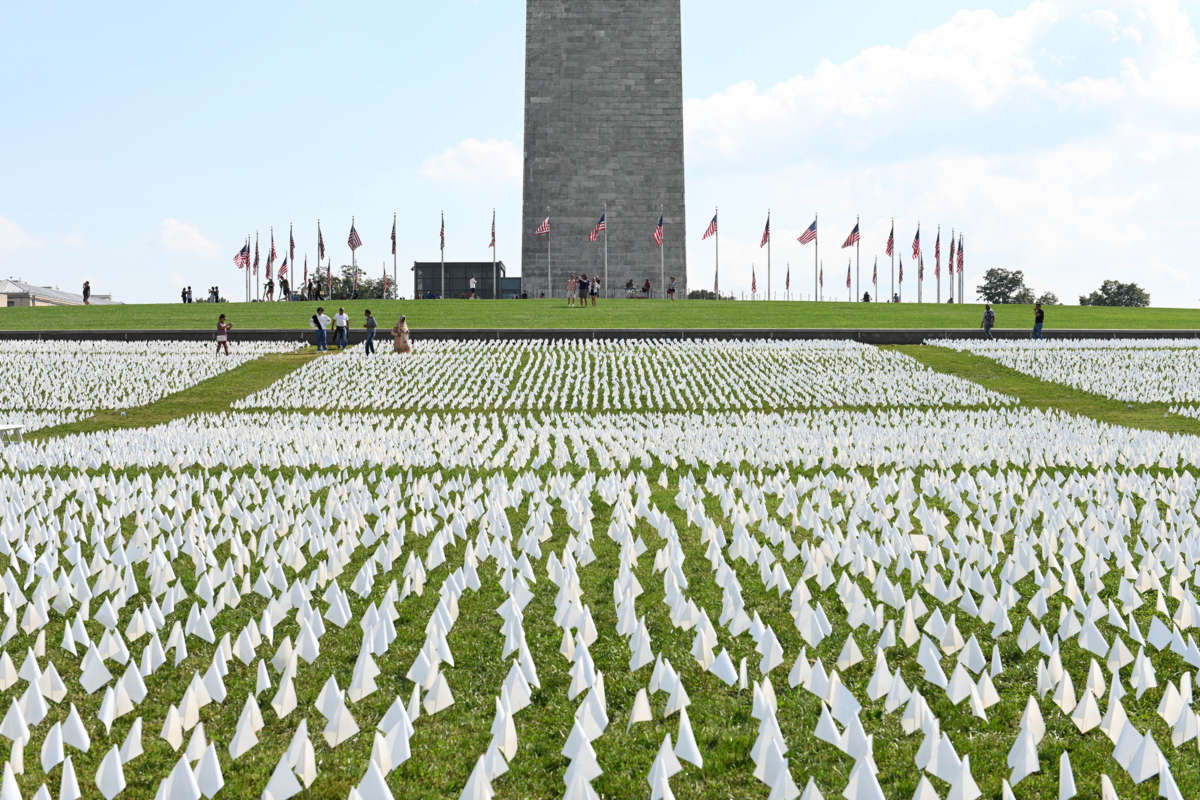The United States passed a grim milestone this week, as the total number of deaths related to coronavirus surpassed the number who died in the country in the 1918 flu pandemic.
More than 675,000 Americans have died from COVID-19 since March 2020, according to figures compiled by Johns Hopkins University. That number represents the estimated death count in the U.S. during the global flu pandemic that took place a little more than a century ago.
Some may argue that the figures are an apples-to-oranges comparison, given that the proportion of the population that died during the 1918-1919 flu pandemic was greater then than it is now. Around that time, there were roughly 103 million people living in the country, compared to today’s 330 million.
But there are other factors to consider, including advances in medical technology and practice over the past 10 decades. Stubborn refusals to wear masks and get vaccinated to mitigate the spread of coronavirus likely made the crisis many times worse than it had to be. By one study’s estimates from roughly a year ago, regular mask-wearing could have prevented up to 130,000 deaths from COVID-19 within the first six months of the pandemic alone
Another point to consider when making comparisons between the two pandemics is the fact that the current one hasn’t ended yet.
“The U.S. isn’t done accruing Covid deaths, sadly,” noted senior infectious diseases writer for Stat News Helen Branswell.
Speaking to CNN about Covid-19’s death toll in the U.S., Harvard School of Public Health professor and epidemiologist Stephen Kissler said that in the early days of the pandemic he would have been surprised by these numbers.
“But if you talked to me in probably April or May 2020, I would say I would not be surprised we’d hit this point,” Kissler added.
That was around the time former President Donald Trump began demanding that states’ economies “reopen,” in spite of the continued danger that the virus posed. Such a push had less to do with believing the U.S. was ready to do so and was more related to Trump believing his reelection hinged on the country returning to normalcy, observers noted at the time.
Trump’s insistence on “reopening” and his turning mask wearing into a political hot button issue made the pandemic even worse. Indeed, had Trump acted more responsibly regarding the coronavirus pandemic (and had health care in the United States been different from the largely privatized and for-profit system from the outset of the crisis), 40 percent of COVID-related deaths in the country could have been prevented, one study found.
Even as the country surpassed the 1918 flu pandemic death figures this week, most in the U.S. remain pessimistic over what the future holds. According to an Economist/YouGov poll conducted from September 12-14, just 27 percent of the U.S. population believes we’ve passed the worst part of the pandemic. Eighteen percent believe we’re currently experiencing the worst part, while a full third of Americans (33 percent) say the worst part is yet to come.
Join us in defending the truth before it’s too late
The future of independent journalism is uncertain, and the consequences of losing it are too grave to ignore. To ensure Truthout remains safe, strong, and free, we need to raise $43,000 in the next 6 days. Every dollar raised goes directly toward the costs of producing news you can trust.
Please give what you can — because by supporting us with a tax-deductible donation, you’re not just preserving a source of news, you’re helping to safeguard what’s left of our democracy.
